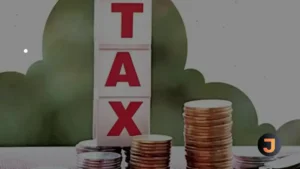72 percent of Americans have seen an expansion of tipping expectations over the past five years. While some Americans are certainly frustrated about the trend, one recent policy proposal could make it worse.
Former President Donald Trump has proposed making all tip income tax-exempt. In the wake of this proposal, bills to exempt tip income have cropped up in both the House and Senate. Both the former president and the idea’s congressional advocates argue it will lower costs for working-class Americans. But it’s a poorly targeted change, with the potential for unintended consequences for both consumers and the federal budget.
A Poorly Targeted Proposal
At the most basic level, exempting tips from taxation would help workers who receive a large share of their income from tips. But tipped workers are a small share of the workforce: according to an analysis from Ernie Tedeschi at the Yale Budget Lab, only 2.5 percent of the workforce work in tipped occupations, and only 5 percent of workers in the bottom 25 percent of earners do. As such, the policy would leave the vast majority of low- and middle-income earners out of the loop.
Additionally, some tip income earners already do not pay personal income taxes, as some (mostly part-time) tipped workers earn less than the standard deduction, and others benefit from the earned income tax credit (EITC) and/or child tax credit (CTC) to the extent that they wipe out any federal income tax liability.
How Tax-Exempt Tips Would Change Behavior
But this shortcoming is not even the most significant potential problem. By making one type of income (tips) exempt from income tax, while other types of income (most importantly, wages) remain taxable, the proposal would make more employees and businesses interested in moving from full wages to a tip-based payment approach. That would mean more service industries adopting the restaurant industry approach of a list price up front and an expected voluntary tip at the end of the transaction.
This kind of behavioral response makes it difficult to estimate the cost of the no-tax-on-tips proposal. A simple analysis of tipped income suggests a lower bound cost of around $107 billion over 10 years for an income tax exemption only, assuming tips as a share of total wage income remains as it was in 2018 and applying the marginal tax rate on wages faced by taxpayers making between $30,000 and $40,000 (waiters and waitresses earn a median wage of about $32,000 and a mean wage of $36,500).
Small behavioral effects, such as higher tips in existing tipped occupations, would incrementally raise that cost. More substantial behavioral responses, such as previously untipped occupations introducing tipping, could make the policy dramatically more expensive.
One could imagine a scenario in which, say, highly compensated lawyers or accountants begin to receive some of their income as voluntary tips. Lawmakers could design the exemption to prevent or minimize exploitation, such as restricting the tax exemption to taxpayers below a certain income threshold or only to tipped income received in traditionally tipped occupations. Additionally, for tip income to be tip income, the payment must be made voluntarily by the customer and cannot be previously agreed upon (among other restrictions), so arrangements to agree upon a “tip” before providing, say, legal services would be illegal, but that could prove challenging for the IRS to enforce. Additionally, lawmakers could reduce the incentive to recharacterize income by placing a cap on the amount of tip income that could be exempted.
The existing no-tax-on-tips bills do not offer much in terms of safeguards to prevent potential abuse. But even with safeguards, the policy would be poorly targeted at low- and middle-income earners, given the relatively small share of the population working in tipped occupations. Worse, the exemption itself, and any safeguards added, would add to the complexity of the tax code overall.
Is There a Better Approach?
What is a good alternative to the no-tax-on-tips idea to cut taxes for low- and middle-income workers? For tip-based workers that already pay no federal income taxes, there isn’t one, save for outright redistribution, given they have no taxes to cut. But if the goal is to deliver tax relief to lower- and middle-income taxpayers, raising the standard deduction (which effectively serves as a 0 percent federal income tax bracket) would achieve that regardless of occupation.
Consider two individuals: a cashier named Tracy and a waitress named Susan. Tracy and Susan each earn $34,000 in income. Tracy receives all of her income in wages, while Susan receives $19,000 in wage income and $15,000 in tips. Under the status quo, they each take the standard deduction and end up paying around $3,350 in taxes.
Under the no-tax-on-tips proposal, Tracy sees no tax cut. However, Susan is able to take the new above-the-line deduction for tip income, reducing her adjusted gross income by $15,000. The deduction reduces Tracy’s taxable income to just $4,400, leaving her to pay only $440 in federal income taxes, resulting in a tax cut of more than $2,900.
On the other hand, increasing the standard deduction by $6,000 would provide both Tracy and Susan with a $720 tax cut. While both tax cuts in this example sum to less than Susan’s tax cut under the no-tax-on-tips scenario, it is worth keeping in mind that there are many more Tracys than Susans in the US economy.
In the long term, raising wages and employment opportunities for workers across the board should be the goal. The tax policy that would best accomplish that is expensing for capital investment, which would encourage businesses to increase investment and, over time, this would boost worker productivity and wages. It is not a quick fix, but it is the right fix—and it is worth doing even if the impact takes several years to fully materialize.
“No tax on tips” might be a catchy idea on the campaign trail. But it could create plenty of headaches, from figuring out tips on previously untipped services to an unexpectedly large loss of federal revenue.






